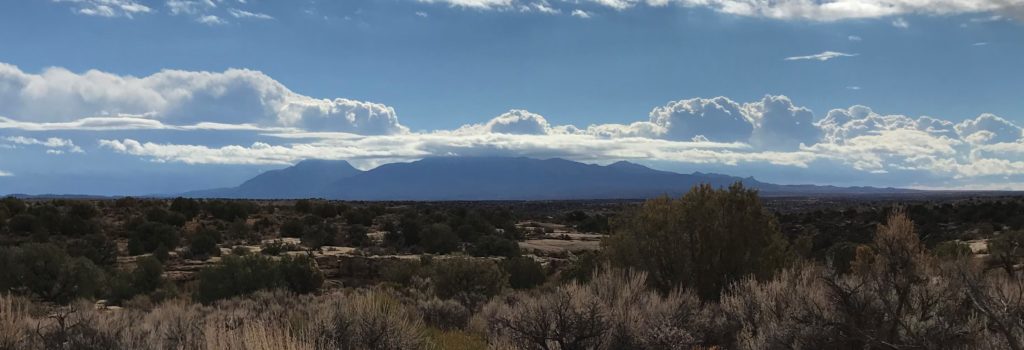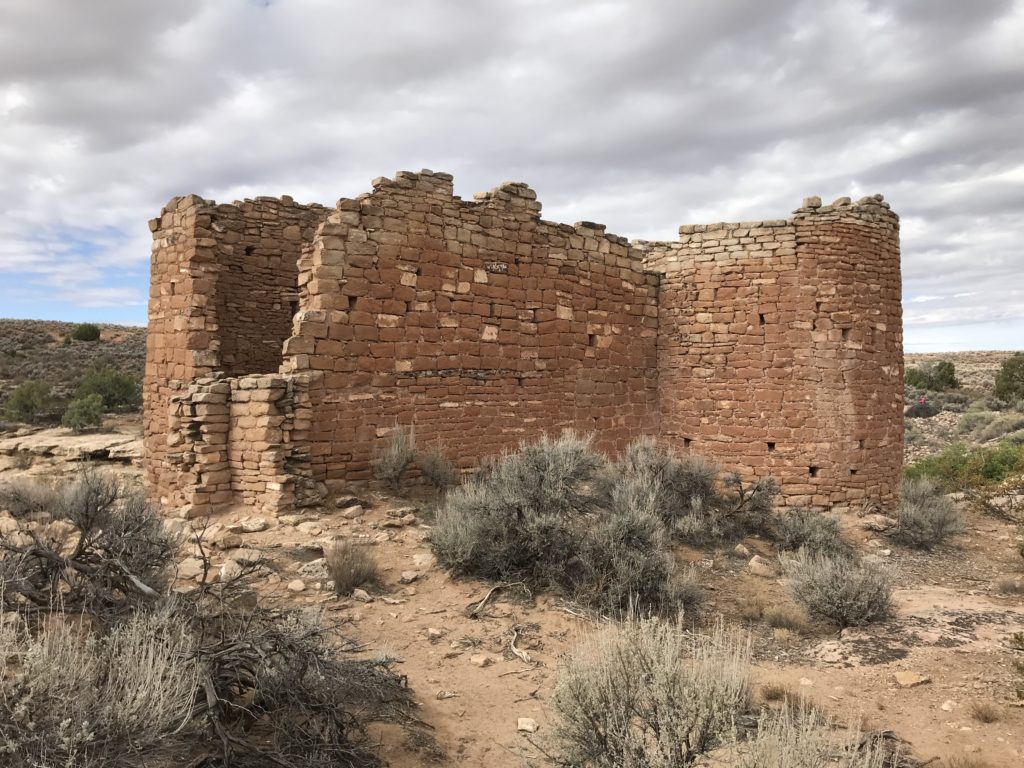 As I mentioned last week, when I wrote about Navajo National Monument, Tom and I spent quite a bit of time viewing the ruins of Ancestral Puebloan people in October. Shortly after visiting Navajo, we visited Hovenweep National Monument. Talk about the middle of nowhere!
As I mentioned last week, when I wrote about Navajo National Monument, Tom and I spent quite a bit of time viewing the ruins of Ancestral Puebloan people in October. Shortly after visiting Navajo, we visited Hovenweep National Monument. Talk about the middle of nowhere!
Hovenweep National Monument is on the border of Utah and Colorado. In case you think Colorado is all Rocky Mountains and snow, the southern part is desert as hot as anything in Arizona. Hovenweep has four “villages” all situated along a long canyon. These ruins were built toward the end of the Ancestral Puebloan period, when the people gathered in remote places. They came together because of outside forces and to guard water sources.

The buildings in the villages of Hovenweep are fairly well preserved, despite being 800 years old because of their remote location. No pioneers tried to ranch or farm this land. The landscape is dominated by Sleeping Ute Mountain. We had to drive down miles and miles of road to get there. Fortunately it is a paved road, but with lots of ruts and potholes.
Once at Hovenweep National Monument, we watched the movie and tried to talk to the ranger. She wasn’t very friendly. We walked around the Square Tower village group, which has a lot of distinctive architecture including square towers and towers shaped like Ds. Some of the buildings are on the lip of the canyon and some are set below the canyon rim. We enjoyed the two mile walk around the village and down into the canyon.
In looking at the map of Hovenweep, there are clearly four villages. This map, however, is not in the park brochure. Nor did we see it available at the Visitors Center. When we tried to ask the ranger, she was particularly unhelpful. So we didn’t see any of the other villages. I do know that the one farthest away from the Visitors Center (Cuthroat) is closed, but we would have driven and hiked to Holly and Horseshoe if we had known about them.
Still, we were very impressed by the Square Tower Group. Those people knew how to build houses that lasted! And they made the most of their surroundings and local materials. It was worth the drive to see it.






